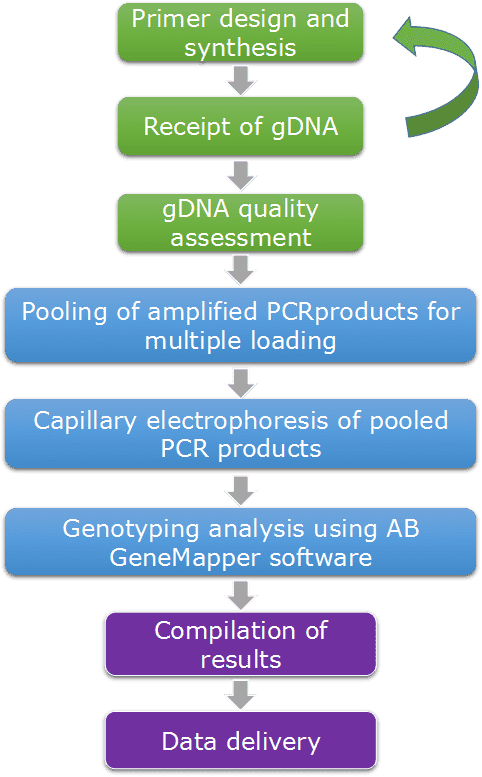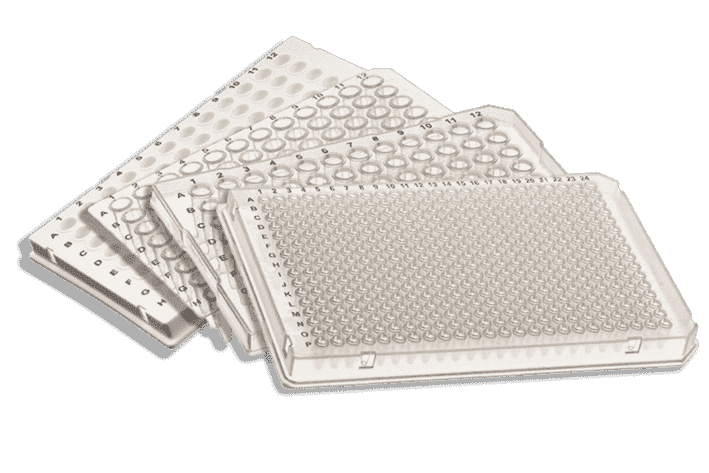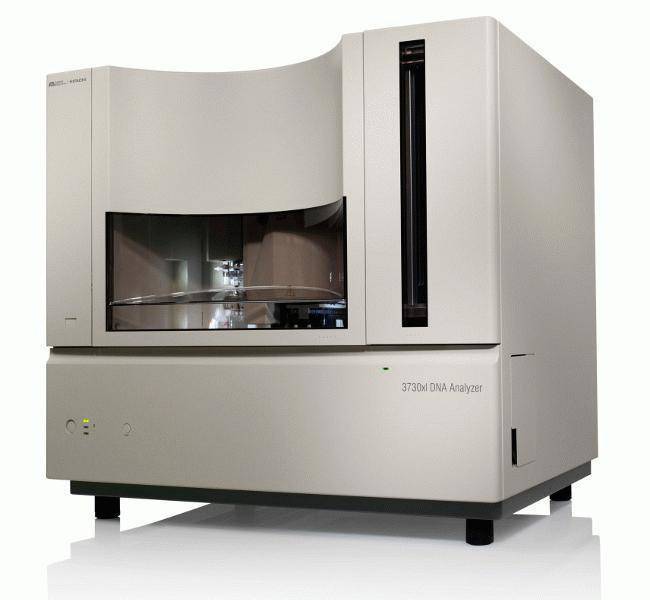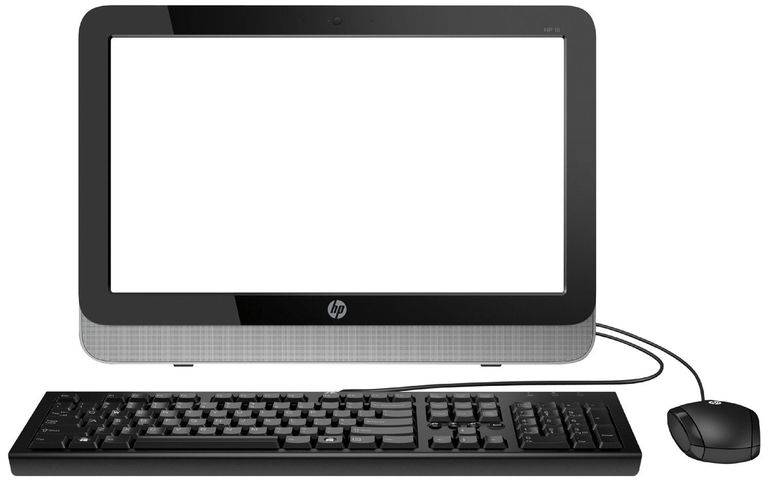CD Genomics has extensive experience in providing support for the selection and design of
microsatellite markers for a wide range of plant and animal species. Besides microsatellite genotyping, we also
provide genotyping by sequencing (GBS) method, which saves time and
resources.
Introduction to Microsatellite Genotyping
Microsatellites, also known as simple sequence repeats (SSRs) or short tandem repeats (STRs), have been popular
markers due to their high polymorphism. Genotyping is an accurate, cost-effective, and fast approach to distinguish
microsatellite alleles, boosted by successive technical advances, including multiplexing PCR and next-generation
sequencing technologies. The complete workflow for microsatellite genotyping includes acquisition of sequencing
data, SSR selection, primer design, primer validation, multiplexing PCR, and capillary gel electrophoresis coupled
with fluorescence-based detection, as well as data analysis.
The PCR reaction is performed with fluorescent
dye-labeled primers, then the PCR fragments can be analyzed on a capillary DNA sequencing machine, and the data is
analyzed using GeneMapperTM software. By taking advantage of multiplexing by fragment size and dye color,
and the ability of automated fluorescent genetic analyzer machines to autoload 16 samples at a time from 96-well or
even 384-well microtiter plates, high-throughput marker analysis can be designed. This service has been applied to a
wide variety of species and can accommodate any species for which microsatellite markers are available.
Advantages of microsatellites as genetic markers:
- Universal and polymorphic
- Locus-specific (in contrast to multi-locus markers such as minisatellites)
- Codominant (heterozygotes can be distinguished from homozygotes)
- PCR-based (only requires tiny amounts of tissue and works on degraded DNA)
- Multiple applications (from individual identification to fine-scale phylogenies)
Applications of microsatellite genotyping
The vast amount of data emerging for thousands
of microsatellite markers across organisms makes microsatellite genotyping a widely accepted tool for:
- Linkage analysis of co-segregation
- Diagnosis and identification of human diseases
- Forensic identification and relatedness testing
- Cell line identification
- Population studies
Workflow of microsatellite genotyping
CD
Genomics adopts advanced platforms (ABI 3730xl DNA Analyzer) and
strategies (multiplexing PCR) to provide a fast and accurate microsatellite genotyping service and bioinformatics
analysis. Our highly experienced expert team executes quality management, following every procedure to ensure
confident and unbiased results. The rough workflow is outlined below.

Service
Specifications

|
Sample Requirement
- Tissue samples, or already extracted DNA, or PCR products
- DNA amount ≥ 50 μl, DNA concentration ≥ 10 ng/μl, OD260/280=1.8~2.0
- PCR products with high specificity
- All DNA samples are validated for purity and quantity
|
 |
Multiplexing PCR and Genotyping
- SSR selection from sequence data
- Primer design and validation
- Multiplexing PCR
- Capillary gel electrophoresis with ABI 3730xl DNA Analyzer
|

|
Data Analysis
- Sizing precision
- Allele calling and binning
- Clustering analysis
- Measuring and reporting error rates
- Genetic diversity and population studies
- More upon request
|
CD Genomics provides full microsatellite genotyping service package, including designing and ordering
fluorescently labeled primer pairs, primer validation, microsatellite genotyping, as well as data analysis. We can
tailor this pipeline to your research interest. If you have additional requirements or questions, please feel free
to contact us.
For Research Use Only. Not for use in diagnostic procedures.


 Sample Submission Guidelines
Sample Submission Guidelines



